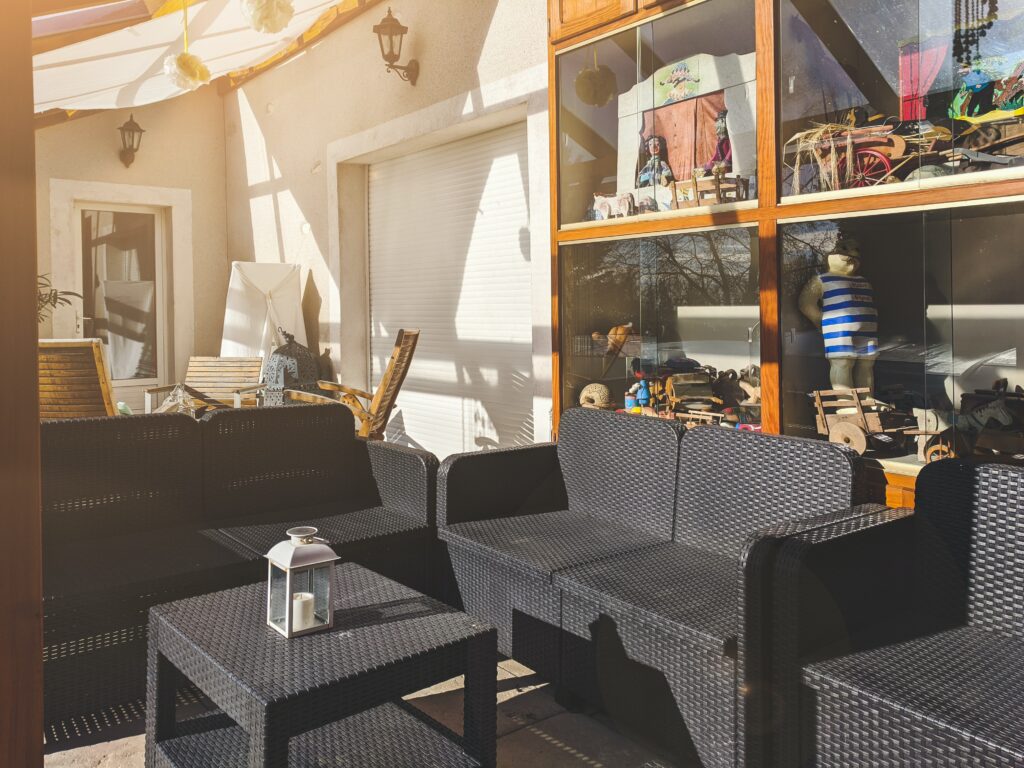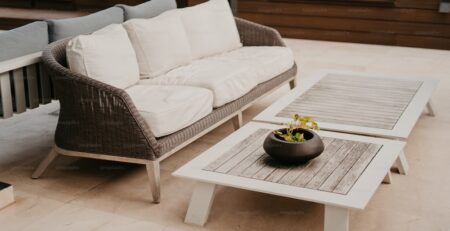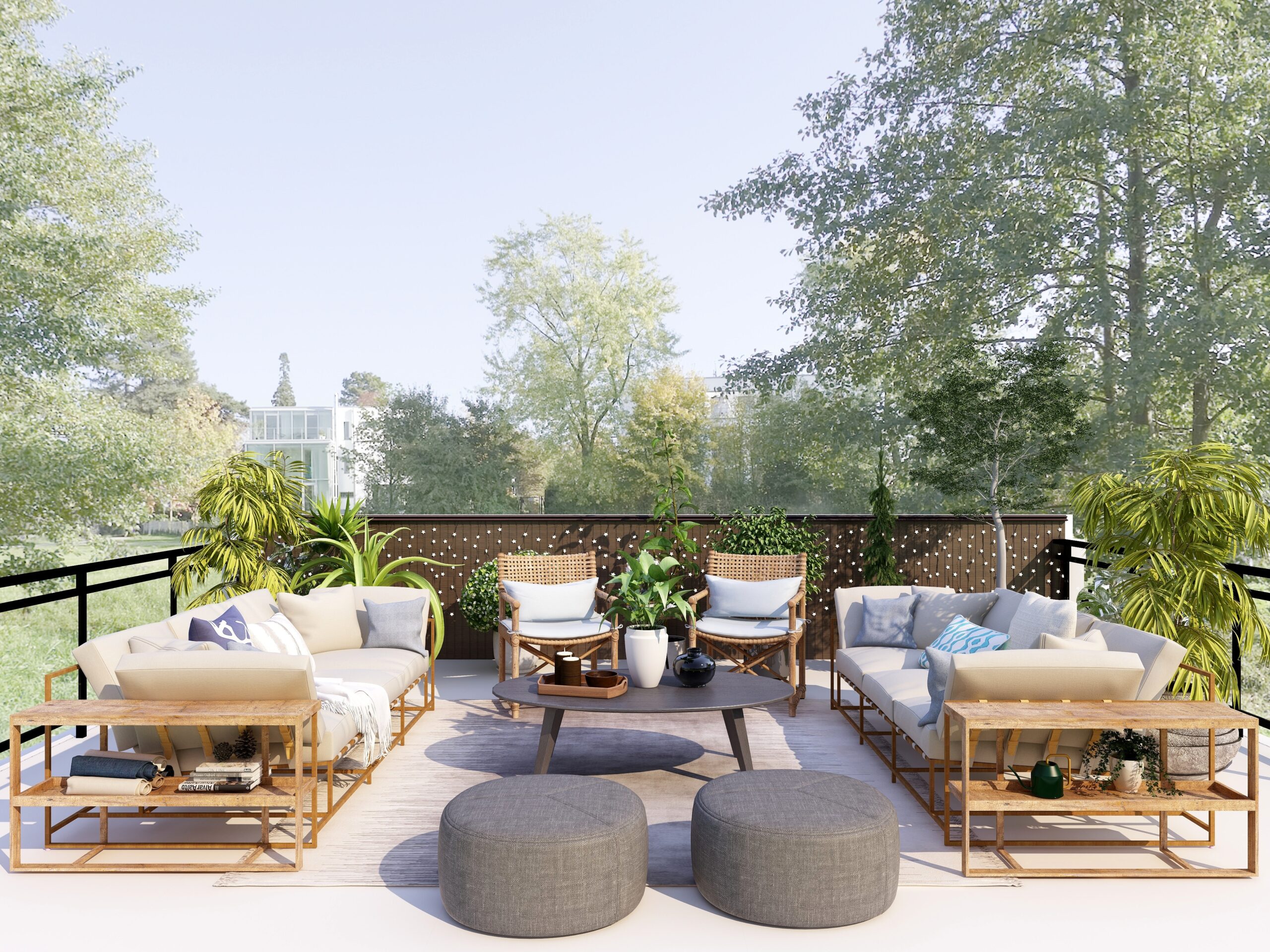AI in Outdoor Furniture: The Role and Its Implications
In recent years, the use of artificial intelligence (AI) in design has become increasingly prevalent. One area where AI and design intersect is outdoor furniture. Outdoor furniture not only needs to be functional, but also aesthetically pleasing and able to withstand the elements. In this article, Eco Tech will explore the role of design and AI in outdoor furniture.
The Overview of AI in outdoor furniture
Design plays a crucial role in outdoor furniture. A well-designed piece of outdoor furniture not only enhances the look of the outdoor space but also adds to its functionality. A well-designed piece of furniture can also be more comfortable to use and last longer. Designers must consider the materials, shape, and overall aesthetic of the furniture when creating a piece that is both functional and visually appealing.

Here are some reasons why AI in outdoor furniture is important:
-
Comfort: The design of outdoor furniture directly affects its comfort level. Comfortable outdoor furniture allows people to relax and enjoy their outdoor spaces, whether they’re lounging in the sun or hosting a dinner party. Designers consider the ergonomics of the furniture, the materials used, and the intended use of the furniture when creating comfortable outdoor furniture.
-
Durability: Outdoor furniture is exposed to harsh weather conditions such as rain, wind, and sunlight. Good AI in outdoor furniture design can ensure that the furniture is durable and long-lasting. Designers consider the materials used, the production process, and the quality of the furniture when creating outdoor furniture that can withstand the elements.
-
Style: Outdoor furniture should complement the style of the home and the outdoor space. Designers consider the overall style of the home, the outdoor space, and the latest design trends when creating outdoor furniture that is stylish and up-to-date.
-
Functionality: Outdoor furniture should be functional and serve its intended purpose. Designers consider the intended use of the furniture, the space available, and the needs of the user when creating outdoor furniture that is functional and meets the needs of the user.
Design Process
AI has revolutionized the design process in many industries, and outdoor furniture is no exception. AI can help designers create more efficient and innovative designs by analyzing data and generating new ideas. For example, AI can be used to analyze weather patterns to determine the most suitable materials for outdoor furniture in a particular location. It can also help designers optimize the use of materials, reducing waste and costs.

Here are some more specific ways in which AI in outdoor furniture can improve manufacturing efficiency:
-
Predictive maintenance: AI can analyze data on the performance of manufacturing equipment and predict when maintenance is required. This can reduce downtime and prevent equipment failures that can lead to delays in production.
-
Quality control: AI can monitor the quality of materials and finished products during the manufacturing process. This can help identify defects or flaws early on, reducing the need for rework or scrap.
-
Process optimization: AI can optimize the production process by analyzing data on material usage, production time, and energy consumption. This information can be used to identify inefficiencies and improve the overall manufacturing process.
-
Inventory management: AI can analyze data on inventory levels and demand to optimize inventory management. This can help reduce waste and ensure that materials and finished products are available when needed.
3D Modeling
Another way AI in outdoor furniture being used is through the use of 3D modeling. Designers can create 3D models of outdoor furniture using AI, allowing them to visualize the final product before it is manufactured. This process can help designers identify any potential flaws or design issues before the furniture is built, saving time and resources.

Here are some more specific ways in which AI in outdoor furniture can be used to create 3D models and simulations:
-
Design input: AI can generate initial outdoor furniture designs based on input from designers. This can save time and improve the efficiency of the design process.
-
Design refinement: Once initial designs are generated, AI can be used to refine the designs based on feedback from designers or simulation data. AI can analyze the designs to optimize factors such as durability, comfort, and aesthetics.
-
Visualization: 3D models and simulations allow designers to visualize outdoor furniture designs in different environments and under different conditions. For example, simulations can show how outdoor furniture will look and function in different weather conditions, or how it will fit into a particular outdoor space.
-
Testing: 3D models and simulations allow designers to test outdoor furniture designs before they are produced. This can help identify any flaws or design issues that need to be addressed before the furniture is manufactured.
-
Customization: 3D models and simulations can be customized to fit the specific needs and preferences of individual customers. For example, AI in outdoor furniture can generate custom designs based on a customer’s desired style, color, and materials.
Customer Data
Additionally, AI in outdoor furniture can help designers create customized outdoor furniture for specific locations or clients. By analyzing data on the environment and user preferences, AI can generate unique designs that meet the needs of a particular space or user.
Here are some more specific ways in which AI can improve manufacturing efficiency:
-
Predictive maintenance: AI can analyze data on the performance of manufacturing equipment and predict when maintenance is required. This can reduce downtime and prevent equipment failures that can lead to delays in production.
-
Quality control: AI can monitor the quality of materials and finished products during the manufacturing process. This can help identify defects or flaws early on, reducing the need for rework or scrap.
-
Process optimization: AI can optimize the production process by analyzing data on material usage, production time, and energy consumption. This information can be used to identify inefficiencies and improve the overall manufacturing process.
Conclusion
In conclusion, the role of design and AI in outdoor furniture is essential. Designers must consider the aesthetic and functional requirements of outdoor furniture to create a piece that is both beautiful and durable. AI can help designers optimize the design process, reducing waste and costs while also generating innovative ideas.
The use of AI in outdoor furniture design is still in its infancy, but as technology advances, it has the potential to transform the industry, leading to more efficient and sustainable designs.










Leave a Reply